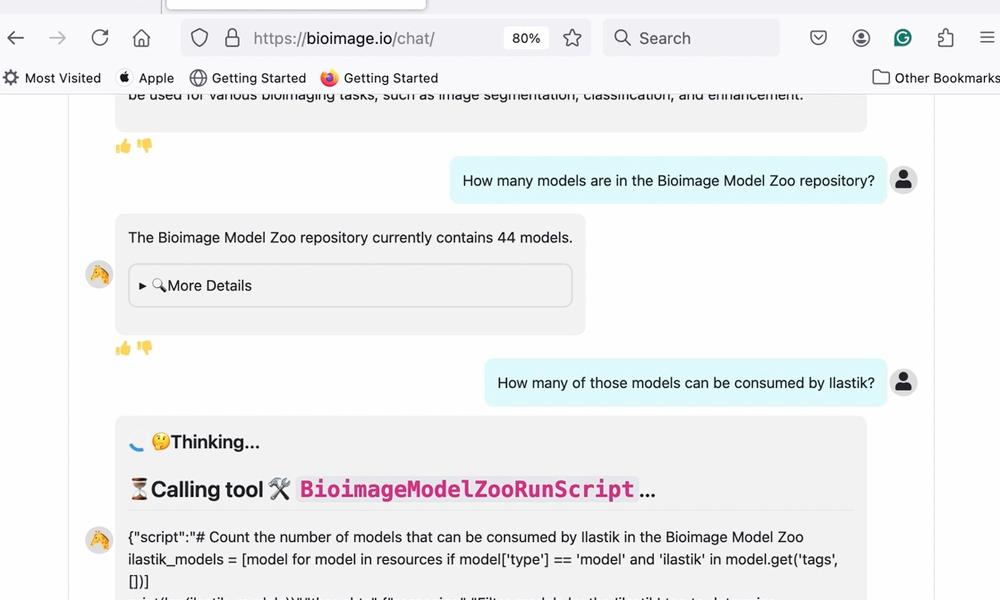The new assistant, called the BioImage.IO Chatbot and introduced in the journal Nature Methods, was developed as a response to the issue of information overload faced by some researchers. “We realised that many scientists have to process large volumes of technical documentation, which can become a tedious and overwhelming task,” explains Caterina Fuster Barceló, a researcher in the Department of Bioengineering at UC3M and one of the study’s authors. “Our goal was to facilitate access to data information while providing a simple interface that allows scientists to focus their time on bioimage analysis rather than programming,” she adds.
The chatbot can be a very useful tool, enabling researchers to perform complex image analysis tasks in a simple and intuitive manner. For example, if a researcher needs to process microscopy images using segmentation models, the chatbot can help select and execute the appropriate model.
The assistant is based on extensive language models and employs a technique called Retrieval-Augmented Generation (RAG), which enables real-time access to databases. “The main advantage is that we do not train the model with specific information; instead, we extract it from up-to-date sources, minimising errors known as ‘hallucinations’, which are common inaccuracies in other AI models like ChatGPT,” adds Arrate Muñoz Barrutia, professor in the Department of Bioengineering at UC3M and another author of the study. “This ensures the user receives truthful and contextualised information, which is the most important thing for us.”
The BioImage.IO Chatbot has additional advantages, as it is also optimised to work directly with microscopes and other laboratory equipment through an extension system that allows researchers to control these devices using simple commands sent directly from the chatbot interface. “Another benefit of our assistant is that it is open-source,” notes Muñoz Barrutia, “allowing other developers to continue creating new modules and improving the tool.”
The model was refined by these UC3M researchers in collaboration with Ericsson Inc and with significant contributions from Wanlu Lei, Gabriel Reder and Wei Ouyang at KTH’s Departments of Intelligent Systems and Applied Physics, respectively. Team members recently presented it at the I2K (From Images to Knowledge) 2024 congress held in Milan, Italy. This team has successfully integrated the chatbot into cloud-based platforms running on web browsers, enabling real-time database queries for image analysis. According to Fuster-Barceló, this extensibility is one of the chatbot’s major advantages, as it facilitates integration into different workflows, including third-party websites and other research systems.
As for the next steps, the researchers plan to enhance the chatbot’s capabilities with a more versatile AI model, capable of reading scientific articles and assisting in experiment planning. This could pave the way for advanced automation in research settings and, perhaps, greater democratisation in access to complex scientific tools, they conclude.
References:
Lei, W., Fuster-Barceló, C., Reder, G., et al. (2024). BioImage.IO Chatbot: a community-driven AI assistant for integrative computational bioimaging. Nat Methods 21, 1368–1370. https://doi.org/10.1038/s41592-024-02370-y
Arrate Muñoz-Barrutia, A (2024). BioImage.IO chatbot: A community-driven AI assistant for integrative computational bioimaging. I2K (From Images to Knowledge). October 23-25 2024. Milan, Italy. https://www.i2kconference.org/
Screenshot of the BioImage.IO chatbot interface. Credit: UC3M
—————————–
